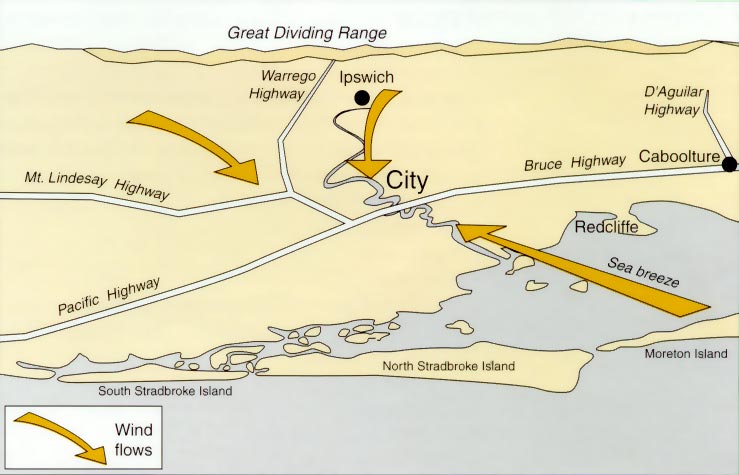
Why air quality is important
Air quality is a measure of the suitability of air for breathing by people, plants and animals. Each person needs approximately 13,000 litres of clean air per day.
Health impacts
Studies show that more people die each year from pollution related illnesses than from car accidents. Air pollution affects our health, particularly in children, older people and those with heart or respiratory conditions such as asthma.
Health effects of air pollution can include:
- more frequent or more severe asthma attacks
- worsened symptoms of emphysema and bronchitis
- worsened symptoms of heart conditions including heart attacks
- aggravated angina
- premature death in very sensitive people
- cancer
- irritated eyes, nose, throat and lungs
- coughing, wheezing and bronchial restriction.
Environment
In Brisbane we are lucky that we do not have the levels of pollution that create acid rain, as happens in some northern hemisphere areas. But it is possible some species of plants and animals may be sensitive to pollutants where levels are highest, for example near industries or major road sides. High pollution days may affect environmental amenity, with hazy skies and reduced visibility.
City's liveability and economy
Clean air is an important factor contributing to our healthy, subtropical, outdoor way of life that is rare for a large city.
Our clean air makes us stand out from other cities in the Asia-Pacific area as a liveable New World City
Clean air is good for our city’s economy:
- we are less sick and more productive, with fewer medical bills
- our urban amenity is more pleasant, leading to more vibrant city neighbourhoods where people want to spend their time and boost local economies.
Clean, healthy air is a key attribute that makes Brisbane an attractive place for tourists, students, investors and the more highly-skilled employees that Brisbane needs to grow our economy.
Brisbane air quality trends and challenges
Brisbane sits at the centre of the South East Queensland airshed, stretching from the Gold Coast to the southern Sunshine coast and inland to the Great Dividing Range. The surrounding mountains and islands create a natural basin that acts to contain and recirculate air pollutants within the airshed. Combined with our subtropical climate, this makes Brisbane conducive to the formation of ozone, or ‘smog’, if sources of pollutants are poorly managed.

Brisbane has very few days of high ozone due to successful pollution reduction strategies, however it remains high on Council’s watch-list because of its health impacts. Other priority pollutants for Council are nitrogen dioxide and particle pollution.
Nitrogen dioxide has shown a steady decline over the last 20 years, however, there may be hot-spots where the guidelines for this pollutant may be exceeded, for example close to busy roads or some industrial activities.
Particle pollutants do continue to exceed the guidelines occasionally in Brisbane, usually due to fire or dust storms, however local hot-spots may still occur close to busy roads or industries.
While the trends show a positive story, vigilance is needed to make sure Brisbane’s air remains clean in the face of the strong growth and increased population density expected in the region.
For more detailed information about Brisbane’s air quality trends, email the Air Quality team.